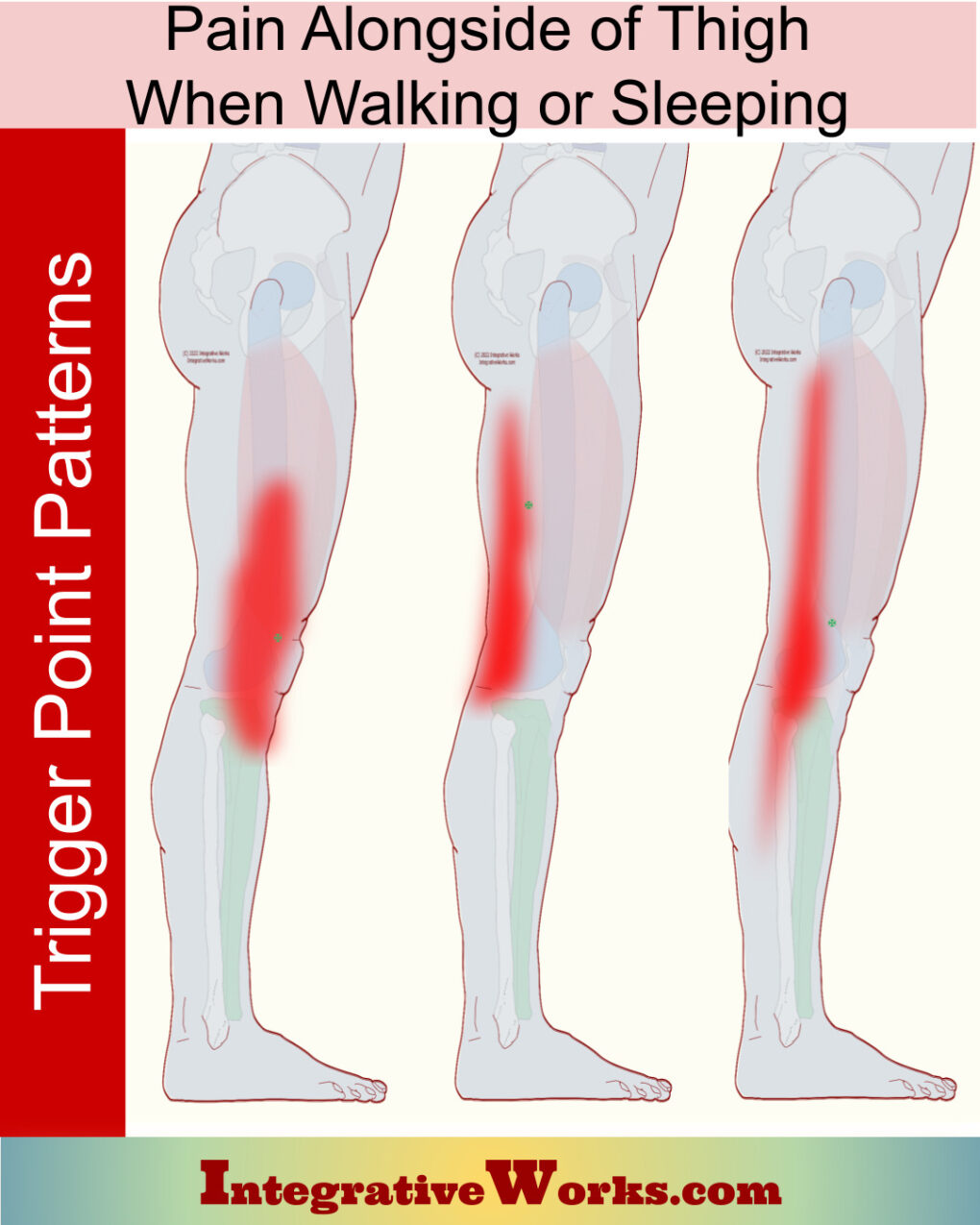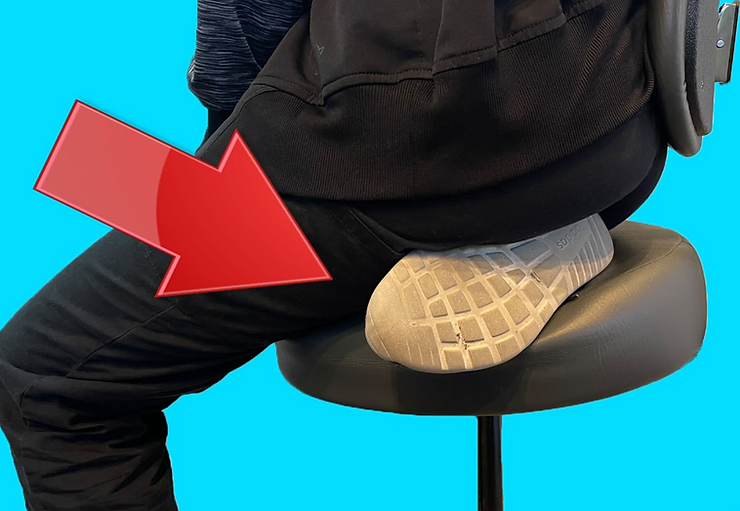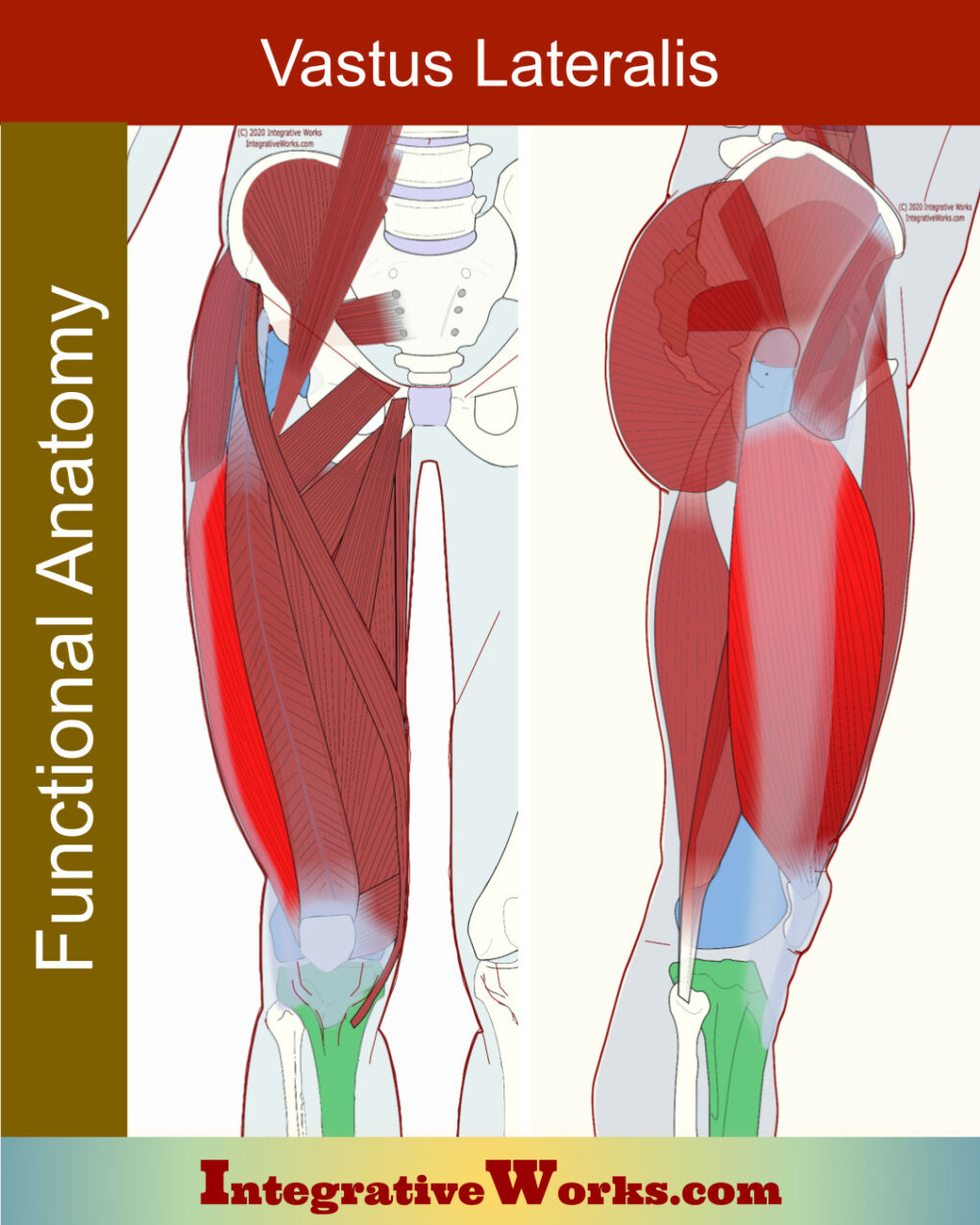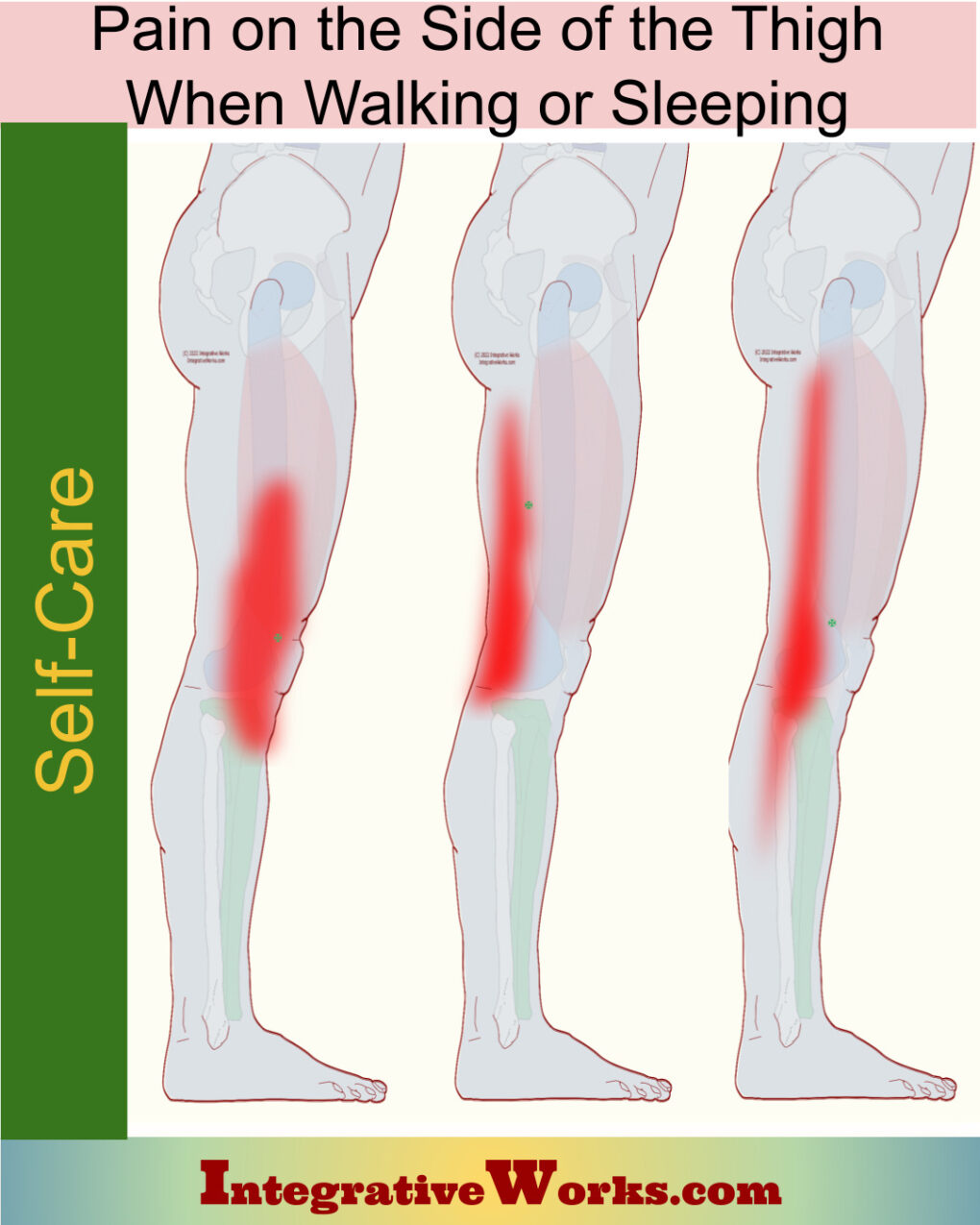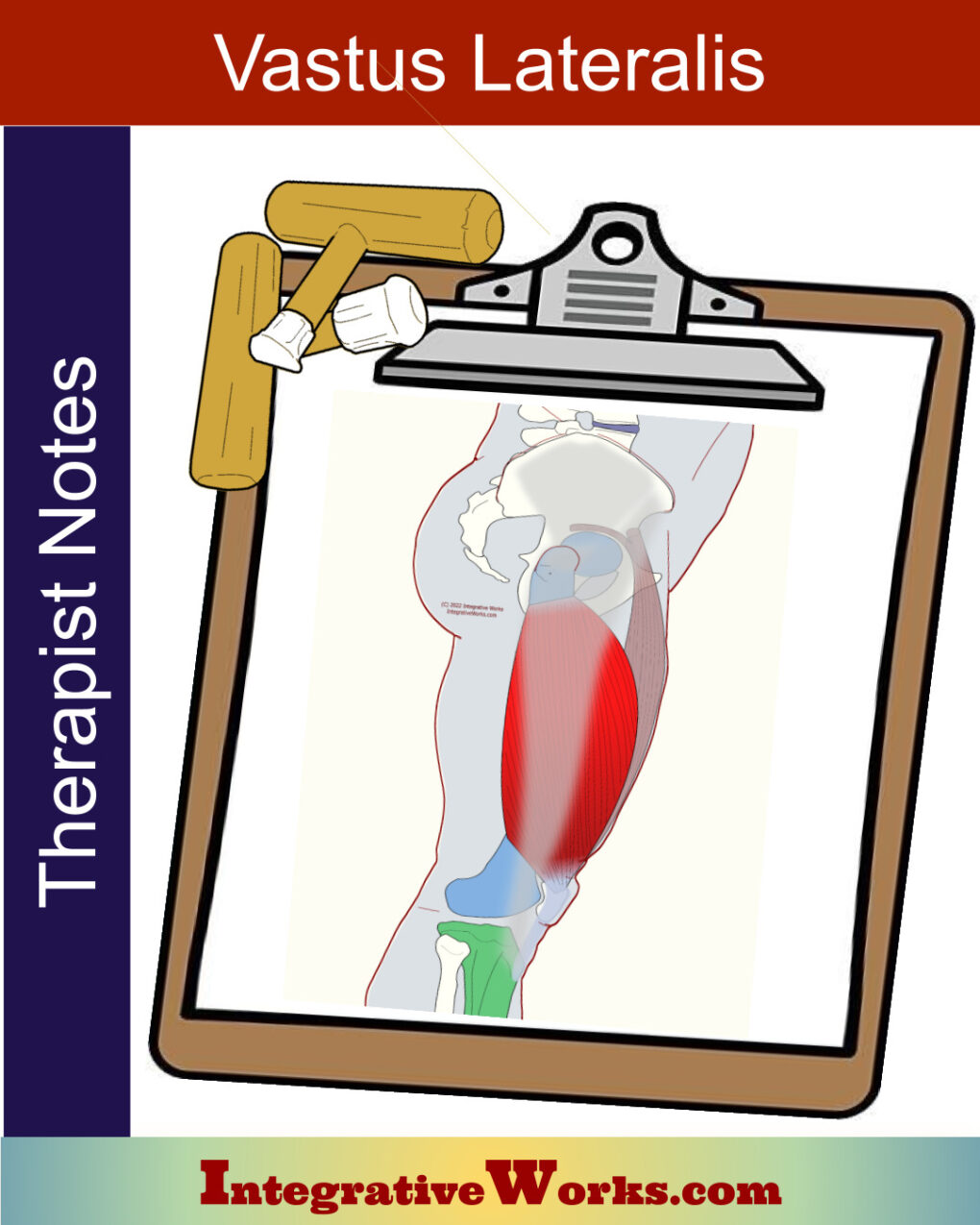Table of Contents
- How People Describe This Pain Pattern
- How You Activate and Intensify This Pain Pattern
- Self-Care – Getting Relief on Your Own
- Musculoskeletal Anatomy Behind Your Pain
- Therapy Notes for Massage and Bodywork
Want to skip ahead?
Here’s a link to my post about
getting relief on your own.
How People Describe This Pain Pattern

Strip of Pain Along Most of the Thigh
People trace alongside the length of their thigh and complain of pain while walking or sleeping. This pain often creates instability in the knee while climbing steps. The pain with instability makes older people tentative in steps and concerned about falls. Athletes are more concerned about their IT band.
When this is acute, this pain is sharp and restricts their walking, especially on uneven surfaces. Therefore, trails and uneven sidewalks are more difficult.
The pain described here should be compared to similar pain patterns from hip muscles.
- This post explores pain from the gluteus minimus, which extends into the back of the ankle and bothers people more when seated.
- This other post explores similar pain that extends down the thigh and toward the front of the ankle. This post focuses on the muscle that tenses your IT band.

Feel Like Hamstring
When the pain is along the back edge of the side of the thigh, they usually complain about their hamstring.
These people have more trouble driving as the seat presses into the muscle. This pressure activates the trigger point. But, like the first one, it also bothers them on uneven terrain.
Again, compare this pain pattern to others. This other pattern bothers people when seated and extends into the same area. That other pain feels less achy and more like the hamstring will seize.

“Lower IT Band” Hurts and Bothers Knee
People complain of pain in their lower iliotibial tract (IT band) near their knee, especially on steps. As a result, they are more concerned about falling, especially when they are older. For Athletes, this feels like a knee problem or arthritis in the making.
It is easy to see how people are concerned about their IT band. This pain runs along that area and often hurts a little more below the knee, where it inserts. Additionally, people are concerned about arthritis in the knee or meniscus tears.
I have this pain occasionally while doing step exercises in my morning workouts. I shift to a very strict form, and the pain goes away within a few sets. If it persists, I work on myself and come back to steps.
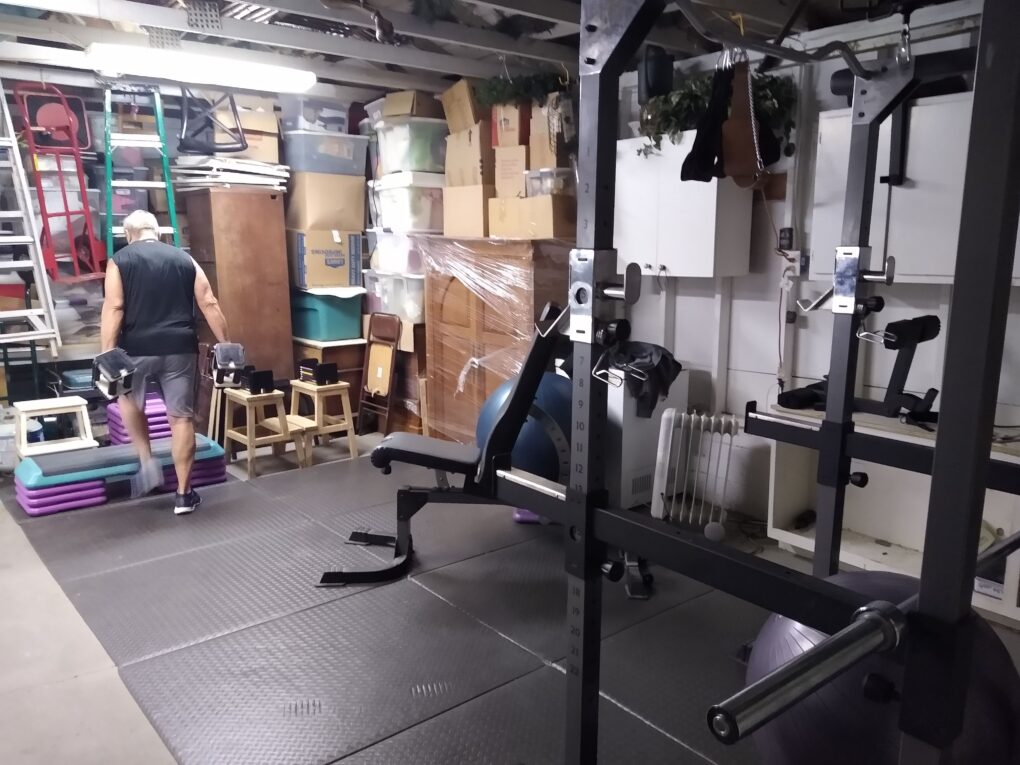
How You Activate and Intensify This Pain Pattern
Misstep
Often, this comes from an uneven or jolting step. For example, stepping into a hole or tripping can activate this trigger point.
Sustained Immobility with Pressure
Often this is a latent trigger point that people don’t notice, most of the time. However, sleeping on this muscle or pressing it into a seat can activate the pain pattern.
Holding a position where the knee is sharply bent or stiffly straight can aggravate this trigger point. At times, it becomes more active because the muscle tenses to support the bent knee when seated. However, the opposite is also true. It can be activated when the knee is held straight for long periods. Also, sitting on your foot can activate this pattern.
The Musculoskeletal Anatomy Behind Your Pain
Musculoskeletal Anatomy
This post on anatomy contains standard information about the origin, insertion, function, and innervation of muscles. Additionally, it includes information on functional considerations and anomalies.
Find Related Posts
Anatomy posts have a grid of all related posts. This includes posts on pain patterns, self-care, therapy notes, NMT protocols, cranial techniques, and cases.
Getting Relief on Your Own
Clinically Proven
Self-Care Strategies
Self-Care Posts have common sections to make them easy to follow and understand:
- Activities to Avoid or Change
- Strategies for Quick Relief
- Stretches and Exercise for Longer-Lasting Relief
- Yoga Corner
Therapy Notes for Massage and Bodywork
Better Bodywork
Through Shared Expertise
Therapy Notes provide details for cranial, spinal, and local joint work. These notes also link to a traditional neuromuscular protocol.
By treating integrative components first, direct work on the muscle becomes less intense while providing longer-lasting relief.
Support Integrative Works to
stay independent
and produce great content.
You can subscribe to our community on Patreon. You will get links to free content and access to exclusive content not seen on this site. In addition, we will be posting anatomy illustrations, treatment notes, and sections from our manuals not found on this site. Thank you so much for being so supportive.
Cranio Cradle Cup
This mug has classic, colorful illustrations of the craniosacral system and vault hold #3. It makes a great gift and conversation piece.
Tony Preston has a practice in Atlanta, Georgia, where he sees clients. He has written materials and instructed classes since the mid-90s. This includes anatomy, trigger points, cranial, and neuromuscular.
Question? Comment? Typo?
integrativeworks@gmail.com
Interested in a session with Tony?
Call 404-226-1363
Follow us on Instagram

*This site is undergoing significant changes. We are reformatting and expanding the posts to make them easier to read. The result will also be more accessible and include more patterns with better self-care. Meanwhile, there may be formatting, content presentation, and readability inconsistencies. Until we get older posts updated, please excuse our mess.

